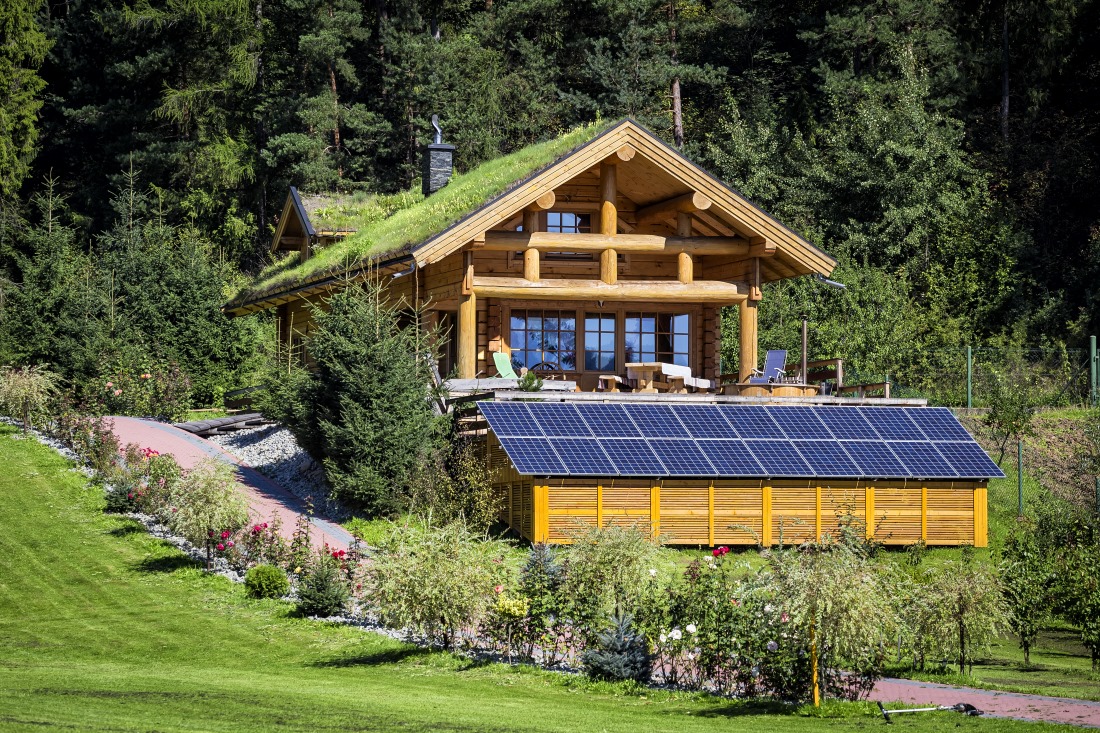Remote properties can be a long way from the local electricity substation, with utility companies often charging substantial sums of money for connection to the national grid.
A well-designed power system using solar panels or a wind turbine provides an excellent solution to remote power needs, with low running costs and high reliability. Solar pv panels are generally easier to site than a wind generator and therefore tend to be more popular, especially in sunny climates.
An off-grid solar or wind power system is specifically designed to meet or exceed the estimated power use of the building - the less energy required, the smaller the system will need to be.
A typical off-grid solar pv system for a remote house in Spain consists of an array of solar panels, a solar charge controller, batteries and an inverter. Solar & wind energy systems use banks of special deep cycle batteries to provide power at night or when there is no power being generated.

5kW Off-Grid Solar PV System - Poland.
Efficient Design Reduces Power System Costs
In off-grid power systems, an inverter is often used to convert the battery power (DC) into mains power (AC). Inverters are highly convenient, as they allow the use of most mains powered devices or appliances. However they come at a cost - the inverter's conversion and standby losses add up. Having a large inverter on stand-by all night, just in-case someone may want to turn on a light, is very inefficient.
On smaller buildings, devices which have longer running times such as fridges, freezers and lighting are often directly powered from DC. This eliminates the inverter's standby and conversion losses, which equates to a smaller, less costly power system.
Appliances to avoid running from a solar or wind powered system include; plasma tv screens, air conditioning, clothes dryers, water heating or fan/space heaters. All of these items use large amounts of energy.
However, it is possible to divert any excess energy to a variety of 'dump' loads, such as a hot water tank or even to a slow cooker. Solar water heating panels should also be fitted for hot water.
We suggest gas or solid fuel for the main cooking source, especially in winter. A solar oven is worth considering in hot sunny climates.
Clothes dryers can be avoided by careful design of the building and is rarely a problem in hot climates. If you really need a large screen TV, compare the latest LED based screens and look into low power LED projectors.
If the building is a new build, passive solar design techniques can eliminate the need for heating, cooling and air conditioning. Older buildings can be retro-fitted with super-insulation, natural ventilation, natural shading and improved windows.
These efficiency measures all contribute to reducing the average daily power demand for the building, and thus translate into smaller, less costly, off-grid power systems. Using a high efficiency design strategy, a very high quality of life can be achieved on a relatively small budget.
At the EDC we design and supply bespoke off-grid solar & wind power systems for remote domestic and commercial buildings. Since 1997 we have specialised in independent, custom designed power systems for clients with properties across Europe, in particular Spain, Portugal and France.
